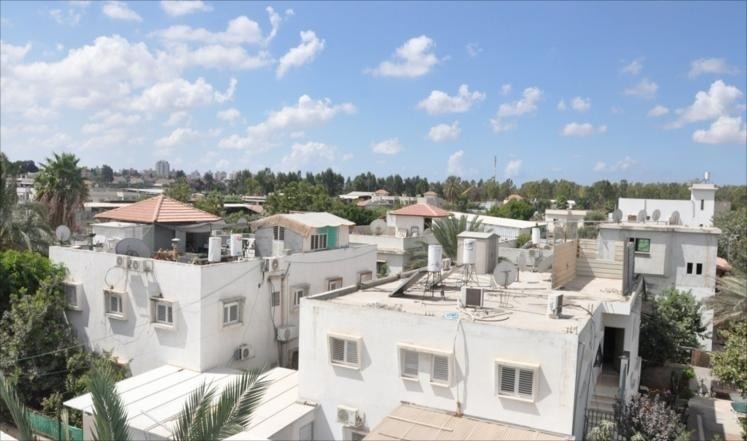Local time Wednesday 11:32 PM | ||
 | ||
Weather 14°C, Wind E at 10 km/h, 64% Humidity | ||
Dahmash (Arabic: دهمش, Hebrew: דהמש) is a Palestinian village in Israel situated at 15 kilometers from Tel Aviv Jaffa in an agricultural area between Lod, Ramle and Nir Tzvi. It has been inhabited since 1951, and has a population of 600 people, all Arab citizens of Israel, living in 70 homes. Almost all of the houses were built since the late 1990-s The village is still unrecognized by the Israeli authorities.
Contents
- Map of Dahamshe Israel
- History and status
- Political issues
- Geography
- Administration
- Demographics
- Economy
- Education
- References
Map of Dahamshe, Israel
History and status
The 70 homes of Dahmash have been built on a land granted to the Palestinians by the Israeli authorities in the 1950s as a compensation for the lost lands during the 1948 Arab-Israeli War (but mostly since the late 1990s). However, they have been classified as agricultural lands, not as residential constructions. Due to the growing population, the inhabitants of Dahmash have built residential constructions, unrecognized by the state of Israel. Since these lands have been classified by the Israeli authorities as agricultural lands, and not residential construction, the village is still officially unrecognized.
the inhabitants of Dahmash have no access to basic services, such as schools, paved roads, sewage and drainage system, kindergartens, and health facilities. And no buses are going to Dahmash. The village has also no green space or outdoor playground ; in 2006, an organization built a playground, but it was declared illegal and demolished by the authorities.
Moreover, the inhabitants have no addresses, because the village is not recognized as official. They have to register in Ramle or other nearby towns.
On Wednesday, the 15th of April, three buildings of Dahmash village have been destroyed by the Israeli authorities.
Political issues
Human Rights Watch have denounced the situation of Dahmash and called for its recognition by the Israeli authorities. The statute of Dahmash prevents its residents from having access to the same services as any other Israeli city, according to Human Rights Watch and other political activists. Consequently, almost every one of the 70 houses is "illegal", and 13 houses are under threat of demolition.
Geography
It an agricultural land of 600 ha. The main entrance road to enter in Dahmash is the road going to Ramle.
Administration
There is an elected chairman named M. Arafat Ismayl. There is no administrative council. Dahmash is under the control of the Lod Valley Regional Council.
Demographics
Dahmash has a population of 600 inhabitants in 70 houses. Originally, they were all Palestinian refugees from the 1948 Arab-Israeli War. The culture of Dahmash is Palestinian with Bedouin influences. The majority of the population of Dahmash is Muslim, from the Sunni branch.
Economy
Dahmash village is composed of houses and of one shop. The inhabitants used to work in agriculture until the 1980s. Then they started working in small businesses.
Education
There is no school. The children go to schools in Ramle and Lod. Human Rights Watch mentioned the problem of education in their Dahmash in a 2010 report.
